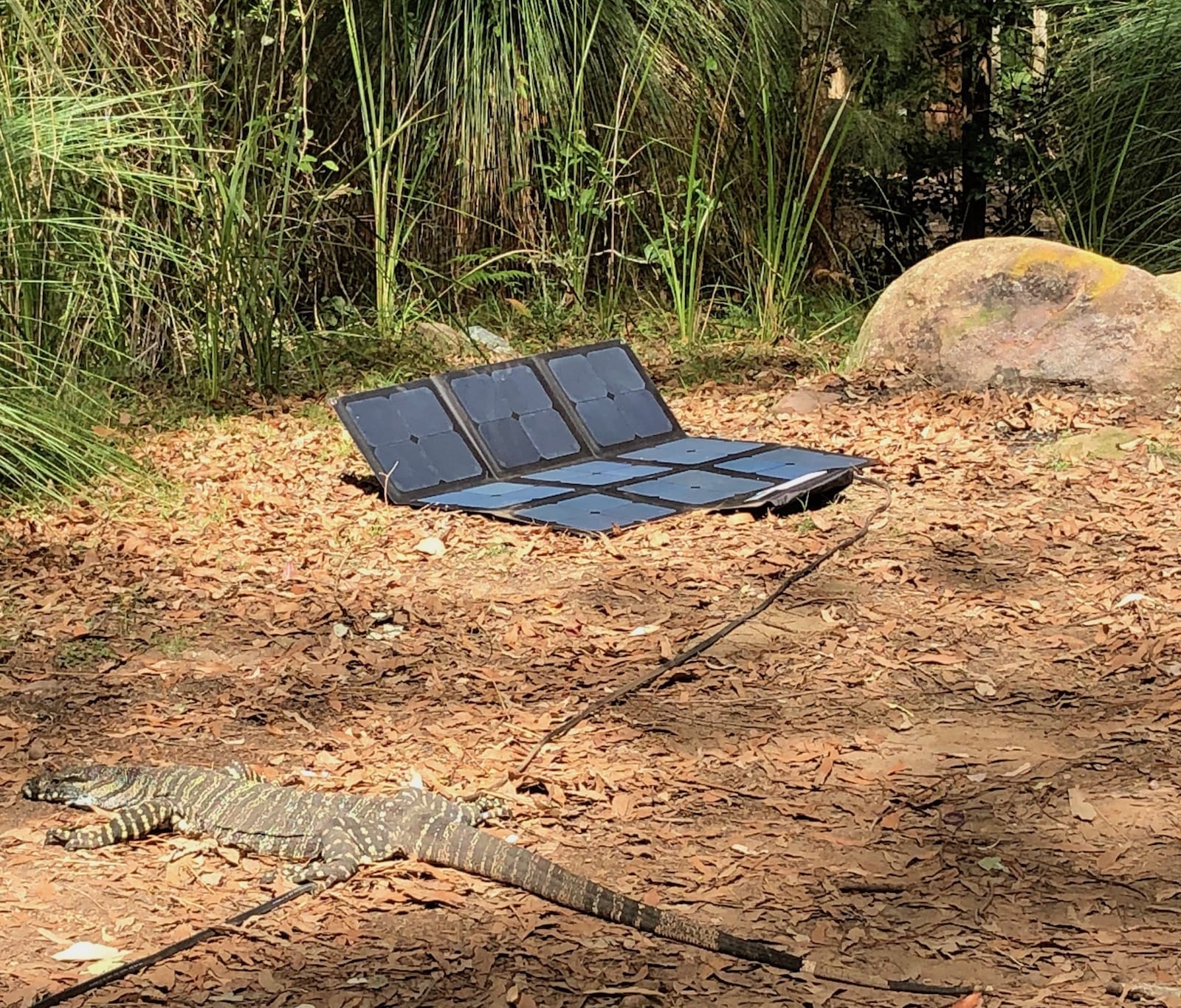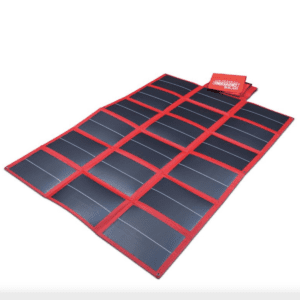Note: This article contains an affiliate link to Outback Equipment. If you click through and make a purchase, we earn a small commission at no extra cost to you.
We’ve had our solar blanket for one year now. It has been bounced around Australia in our truck, hung off the bullbar, laid down in sand and dirt, soaked with rain, coated in dust, had ducks walk over it… all manner of abuse.
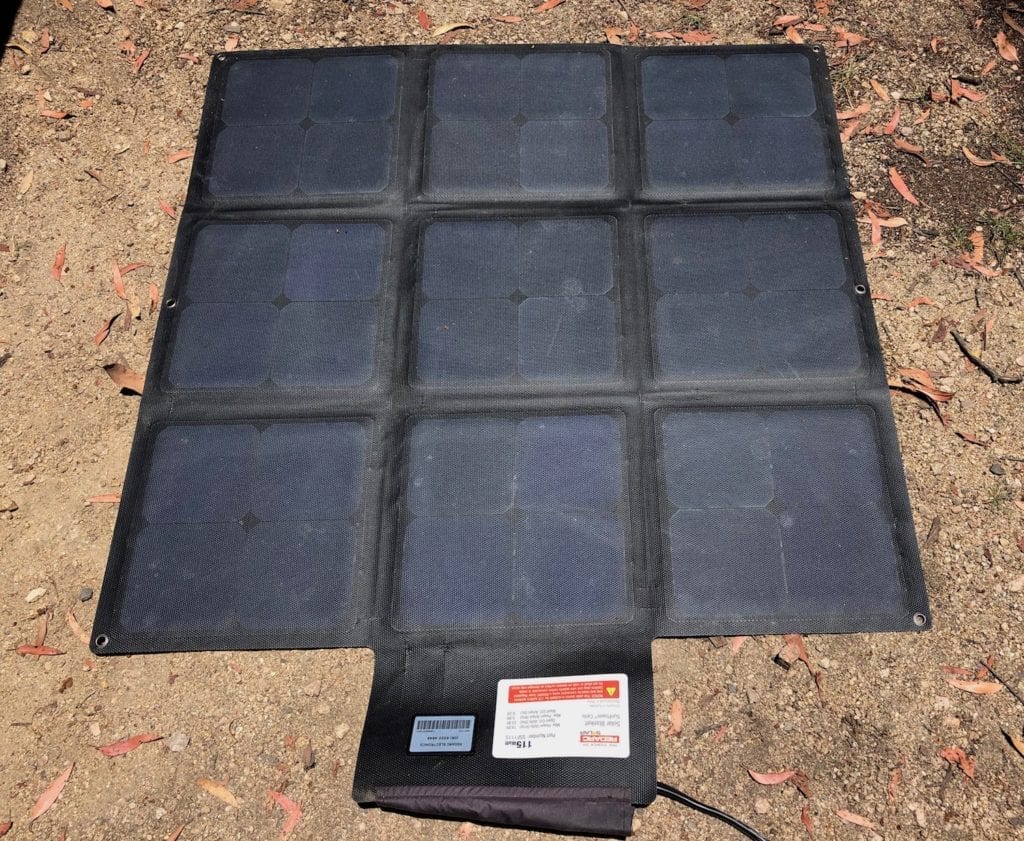
So how’s it holding up after one year of use and abuse?
A Hard Life So Far
In our initial review of this solar blanket, we explained why REDARC solar blankets are smaller for a given output. We also looked its performance in partial shade and gave you some results.
This time, we’re more interested in how well it has coped with some fairly severe conditions.
You see in 12 months we’ve travelled about 40,000km, zig-zagging all over Australia. When we’re travelling, the solar blanket lives in its bag tucked inside one of our truck’s storage boxes.
We certainly try to look after it, but inevitably it rubs against everything else in there. That’s just the way it is when you travel on rough dirt roads.
We’ve also used the blanket in pretty well every environment possible, from lying flat on cool green grass to being thrown down onto a bed of rocks… and everything in between.
Any Issues?
I’m pleased to say our solar blanket is still performing like new. The output from this 115W blanket is on a par with our 200W portable solar panel, which was supplied with our Wedgetail Camper.
After a couple of weeks, our solar blanket had a few marks in the backing fabric between the cells, in the folds. You see, the blanket folds tightly in on itself when packed away and it looked like the fabric was stretched and damaged.
We fully expected splits to appear in the folds by now. However, the blanket hasn’t deteriorated at all, beyond the first marks we saw originally.
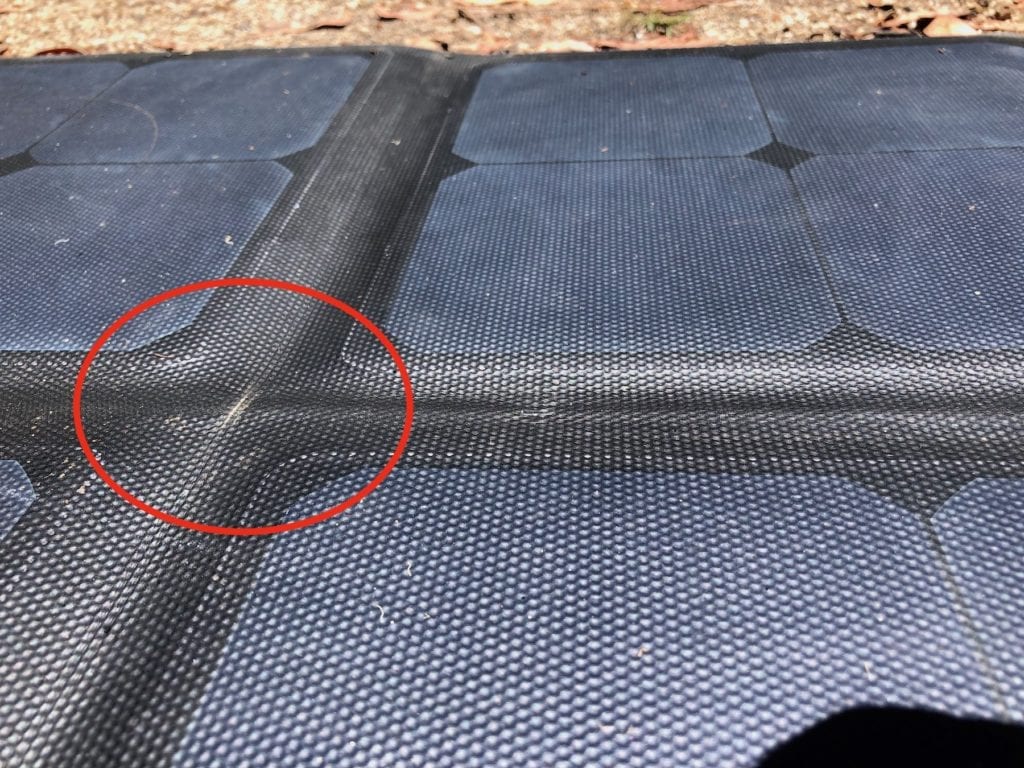
One thing we did expect was damage on the back side of the panel. After all, this cops the rocks, stones and sticks when it’s laid down on the ground. The backing fabric must be super-tough though, because there’s hardly a mark on it.
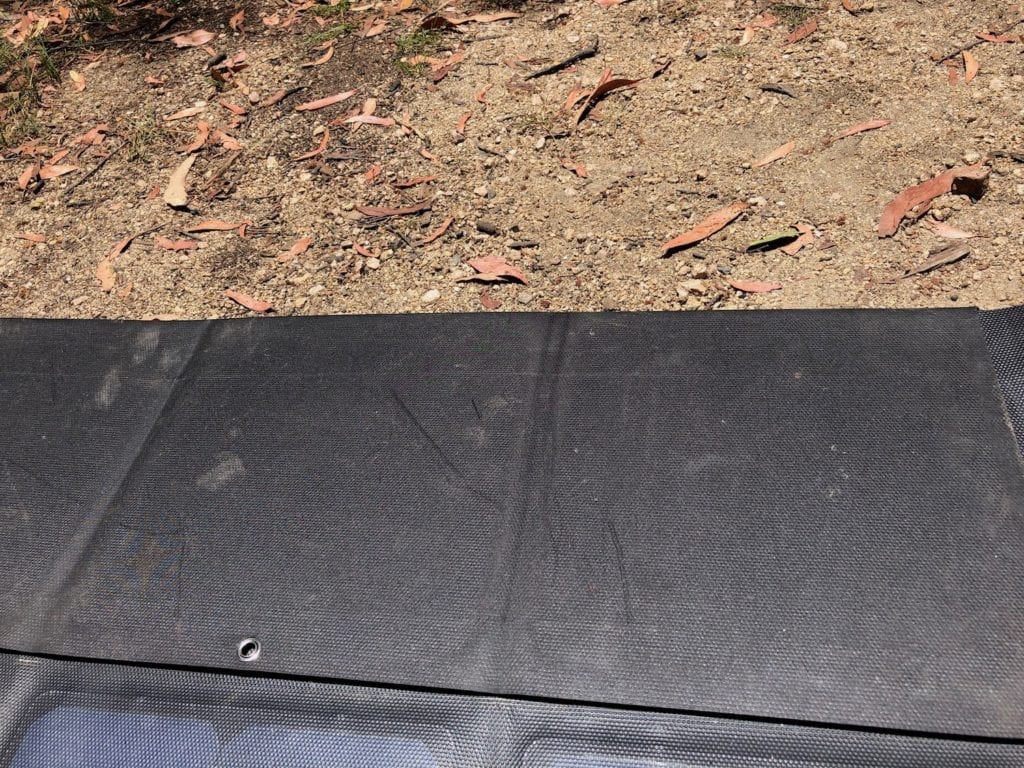
The solar blanket uses a grey 50A Anderson plug and REDARC also supplied us with a 10 metre long extension cable. When we plug the extension cable into the Anderson plug on the solar blanket, we’re always careful to wrap it in the material strap that wraps around the solar blanket when folded.
The photo below will help you understand what we mean here. By doing this, we keep the dirt and dust out of the Anderson plugs.
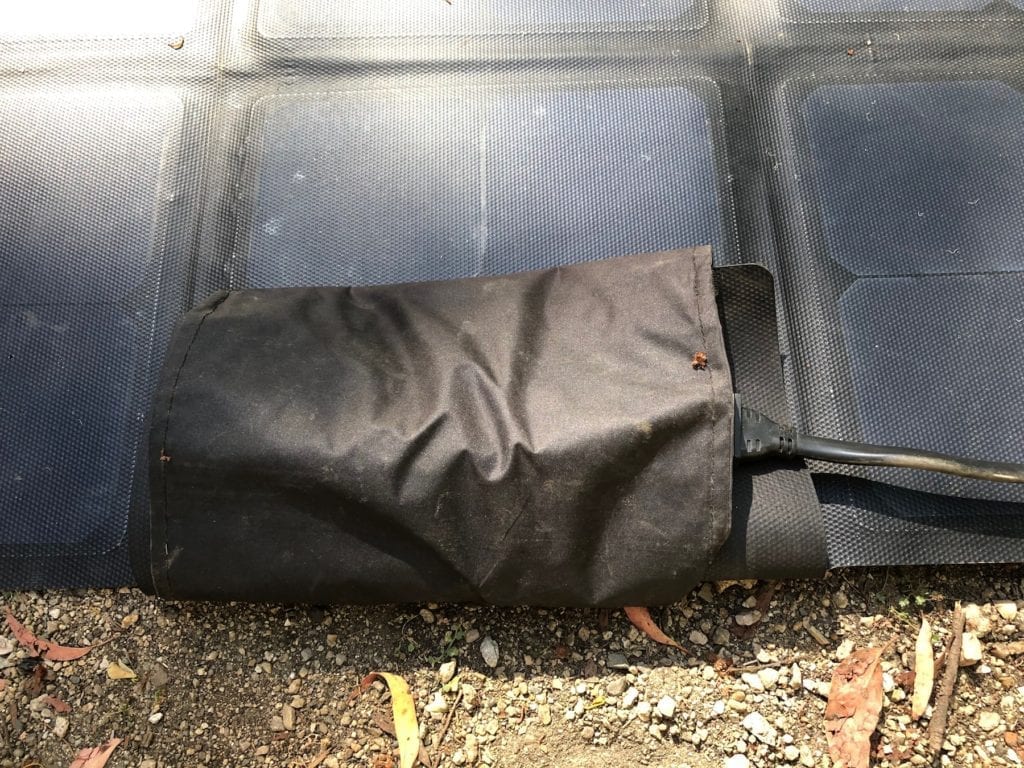
And the other thing we do is make sure we don’t put stress on the cable between the solar blanket and the Anderson plug. After all, we don’t want to damage the connections.
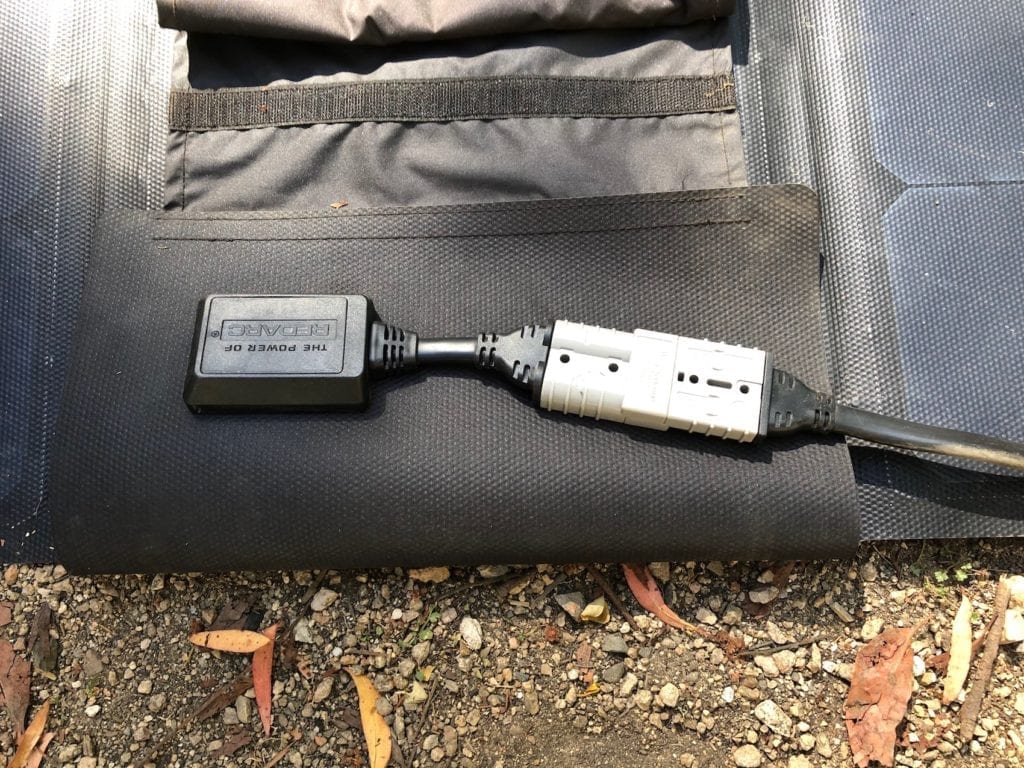
These are just a couple of small things to help prolong the blanket’s life.
Cleaning
We covered this extensively in an article we wrote for REDARC Electronics. Cleaning is important. Wipe down both sides of your solar blanket occasionally, especially before packing up. You don’t want sticks or stones caught between panels when it’s packed away and bouncing around the inside of your vehicle.
In Summary
The REDARC 115W SunPower® Cell Solar Blanket is our go-to item when we need solar power. With an output comparable to a much bigger 200W portable panel we have, it’s just so much easier to use.
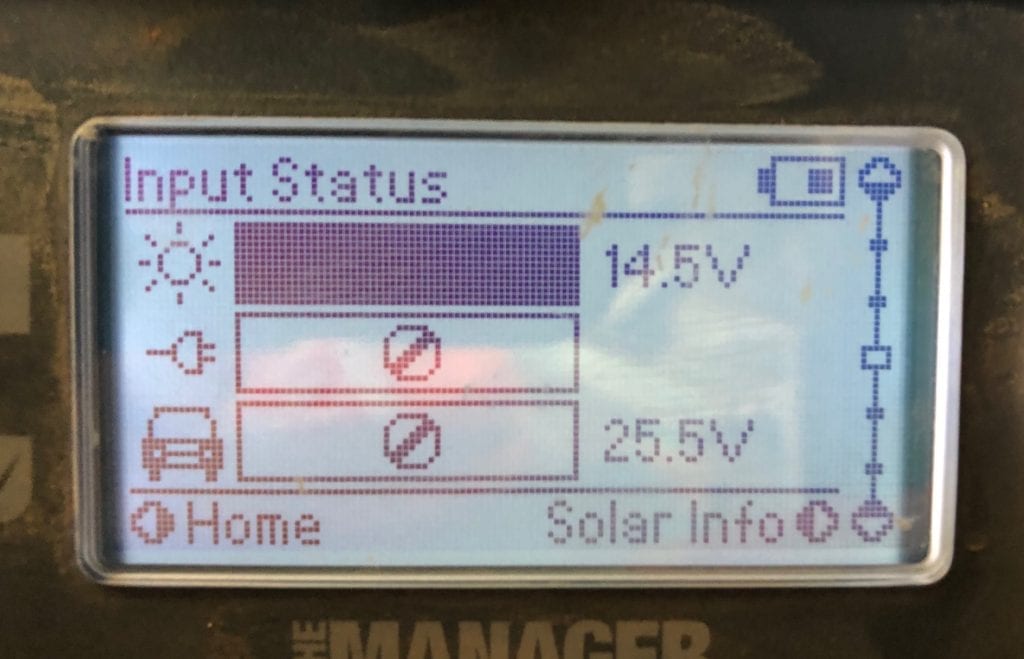
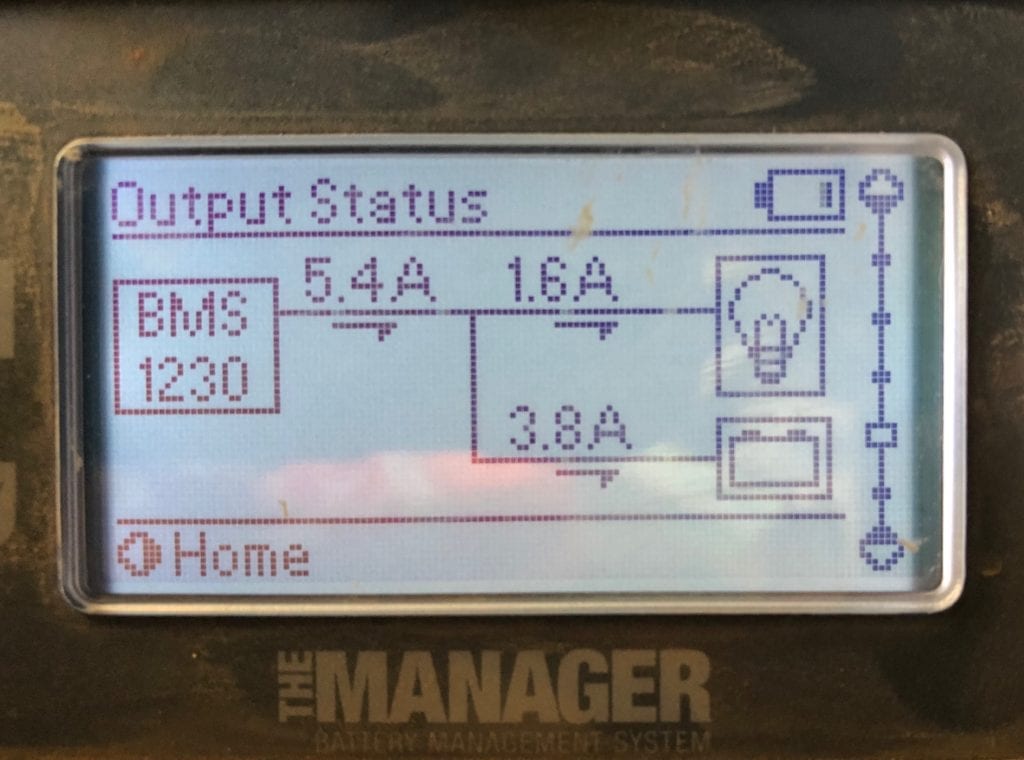
When we first reviewed this solar blanket 12 months ago, we asked, “How long will it last? Who knows. But given its solid construction, we have no reason to doubt it will withstand the test of time.”
Well, you’ll find the answer to this question in our 3 year review. Only 3 years? Yes, but there’s more to this story, much more.
Looking for more reviews on 4×4 Accessories? Then go here for more.

Get your Traveller’s Guides
… and a whole lot more at our FREE RESOURCES Page!
Any questions or comments? Go to the Comments below or join us on Pinterest, Facebook or YouTube.
Any errors or omissions are mine alone.
NOTE: The REDARC solar blanket was supplied to us free, in return for a review. (That said, our reviews are always honest and authentic – we tell it how it is).

